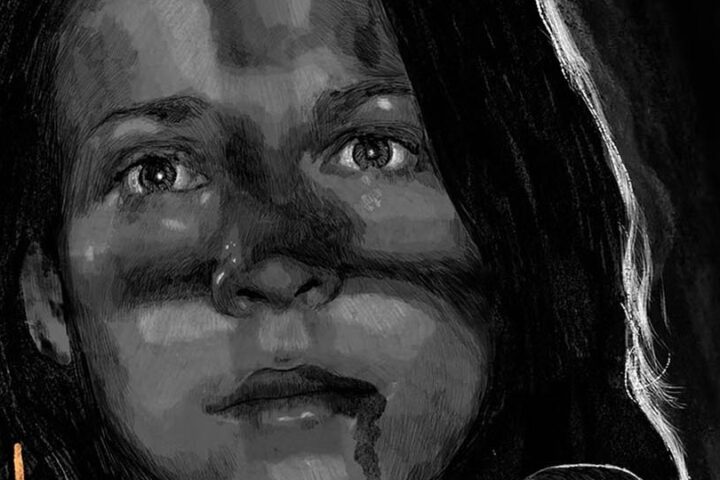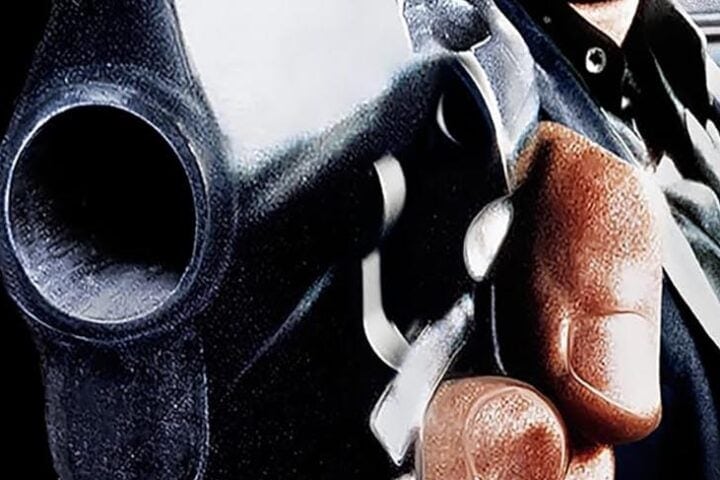In a September 12, 1997 piece for The Wall Street Journal titled “Gridiron Feminism,” Camille Paglia argued that not only is football “congruent with an enlightened feminism,” but that the sport “is one of the best educational tools for showing women how to advance in the ‘hostile workplace,’—which current sexual harassment regulations try to control through intrusive, after-the-fact legal remedies.”
Karyn Kusama’s feature-length directorial debut, Girlfight, maps out a similar argument using the template of a boxing film, as high school student Diana (Michelle Rodriguez), perpetually surrounded by men who belittle her, including her patronizing father Sandro (Paul Calderón), trains to become an amateur fighter. Near the film’s end, as Diana prepares for a bout billed as “New York’s first gender-blind amateur boxing event,” it’s evident that Kusama’s film is tinged with a certain hard-nosed fantasy, one in which female equity extends to being able to take a punch from a man in the ring.
Though initially resistant, Hector (Jaime Tirelli), who works as a trainer at a small Brooklyn gym, agrees to take on Diana as a client. Months later, her first amateur fight is against Ray (Victor Sierra), a typically macho and dismissive amateur fighter who views Diana as more of a nuisance than a serious opponent. During their bout, Ray hits Diana below the belt twice, drawing warnings from the referee. In the thin crowd, Ray’s friend (José Espinal) shouts out, “What’s below the belt, anyway? Ain’t nothing but a pussy!” This sexist epithet is met with a scowl from Diana, who charges at Ray and nearly takes him to the canvas. In a moment like this, Girlfight defiantly suggests something like Newton’s third law of motion in relation to gender and sports: For every misogynistic action, there’s an equal and opposite reaction.
While boxing features heavily into the film, its backbone is a love story between Diana and Adrian (Santiago Douglas), another amateur fighter who senses the pain fueling Diana’s ambition to fight. One night, after Diana runs away from home following a verbal spat with her father, they’re lying in bed and discussing their lives. When Diana reveals that her mother committed suicide years earlier, Adrian responds not with untoward curiosity or cynicism, but with compassion. He’s basically a good guy, but his dilemma over how others will perceive his relationship with Diana becomes a significant source of tension.
With Girlfight, Kusama constructs a lived-in milieu that rarely feels schematic by envisioning an array of male characters with a wide range of responses to female desire and trauma. When Diana and Adrian finally go toe to toe in the ring, it’s simultaneously a natural endpoint for the film’s climax and a thematic meditation on hand-to-hand combat ethics, as Adrian must decide whether to fight Diana with the same ferocity as he would any other male opponent.
Diana’s sensitive brother Tiny (Ray Santiago), in particular, reveals how societal expectations concerning men and women can work negatively in both directions. Though Sandro pays for Tiny’s boxing lessons (the man refuses to do the same for his daughter), his son is uninterested in fighting and is more drawn to art. By viewing gender as a fixed, defining characteristic, Sandro unwittingly betrays his children’s confidence.
As a boxing movie, Girlfight is a modest, modern battle of the sexes, variously propping up certain sports clichés and knocking others to the mat. But Kusama’s film excels above all as a prescient consideration of how prejudices against gender identity cannot withstand the desires of individual perseverance. This seems especially resonant in recent years, as debates about the legitimacy of transgender athletes, in particular, consider an issue that Girlfight was already engaging with at the turn of the 21st century.
Image/Sound
This new 4K digital restoration, supervised by Karyn Kusama and director of photography Patrick Cady, fully captures the film’s gritty but colorful visual palette. There’s excellent detail and depth to the image throughout Girlfight, which is most notable in a scene where Diana does a set of pull ups with a dozen or so classmates lined up behind her on an athletic field. The 5.1 surround DTS-HD Master Audio track packs a punch in fight scenes while remaining nuanced and balanced in more intimate moments. And the film’s hip-hop-heavy soundtrack, with music by Santana, Cuban Link, and Fat Joe, gets suitably rousing when it needs to.
Extras
The disc’s heavyweight extras are led by a new featurette titled “Body and Soul: Karyn Kusama on Girlfight,” in which the writer-director reflects on both her cinematic influences and how moving to New York to attend NYU transformed her life. Furthermore, Kusama ruminates on her affection for the city, on how her own experiences as a boxer informed the making of Girlfight, and on the process of casting Michelle Rodriguez in the lead role. In another new featurette, titled “The Final Round: Postproduction on Girlfight,” composer Theodore Shapiro and editor Plummy Tucker discuss their experiences working with Kusama and how each of their creative sensibilities fed into the film’s “singular vision.” In particular, the pair discuss how editing and music work in tandem within certain scenes to create a range of emotions.
In a commentary track recorded in 2001, Kusama discusses conceiving, writing, location scouting, and directing the film under the pressures of little money and a tight shooting schedule. She notes that executive producer John Sayles (who has a cameo as a science teacher) put up most of the $1 million budget. Kusama also provides commentary in a short featurette with storyboard-to-film comparisons on the genesis and development of two key fight scenes. Rounding out the disc is a theatrical trailer and a booklet with an essay by author Carmen Maria Machado, who views the film, in part, as “a queer internal journey of self-determination.”
Overall
A prescient and compelling consideration of gender identity and sports, Girlfight has been given a superb transfer and a fistful of stellar extras from the Criterion Collection.
Since 2001, we've brought you uncompromising, candid takes on the world of film, music, television, video games, theater, and more. Independently owned and operated publications like Slant have been hit hard in recent years, but we’re committed to keeping our content free and accessible—meaning no paywalls or fees.
If you like what we do, please consider subscribing to our Patreon or making a donation.



